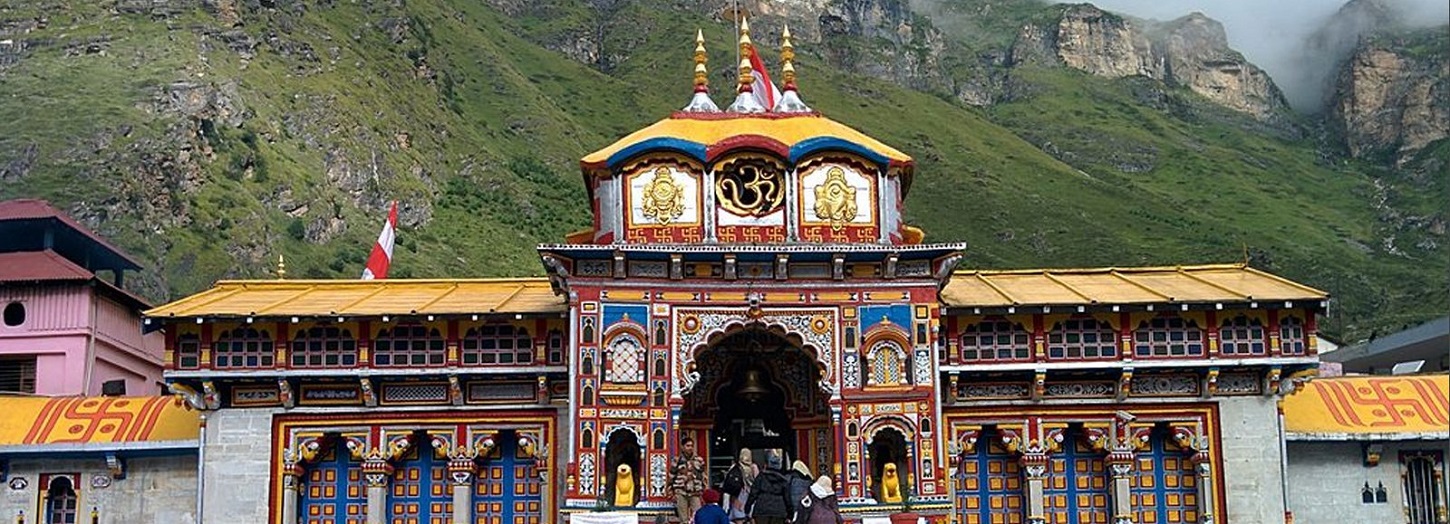Badrinath is the part of both the actual Chardham Yatra and Chota Chardham Yatra in Uttarakhand and is therefore of great spiritual significance among the Hindus and specially the Vaishnavites. The temple is perched at an altitude of 10,279 feet above sea level, in the lap of the Garhwal hill tracks, along with the backdrop of the Neelkanth Mountains. The banks of the Alaknanada River house the spiritual abode in the Chamoli district of Uttarakhand.
To reach Badrinath,
• The closes airport is the Jolly Grant Airport at Dehradun
• The nearest railway station is at Rishikesh
• National Highway 58 links Delhi to Mana Pass, close to the Indo-Tibet border, and is connected to Badrinath Dham.
Badrinath Temple is the abode of Lord Vishnu and is considered to be one of the 108 Divya Deshams for Vaishnavites. Badrinath Dham is also called Badri Vishal and apart from being part of the Chardham Yatra, it is also one among the Sapt Badri, namely, Yogadhyan Badri, Bhavishya Badri, Bridha Badri, Adi Badri, Ardha Badri and Dhyan Badri.
Significance of Badrinath Dham
According to Hindu Mythology, during the Sat-Yug, Lord Vishnu’s incarnation as Nar-Narayana practiced severe penance in the area, where the Badrinath Temple is located at the present day. The place at that time was filled with Plum Trees, which are known as Badri in Sanskrit. The forest of Plums in the divine place was named as Badrika Van and the spot of Lord Vishnu’s penance came to be known as Badrinath, the Lord of Plum Forest and is the first spiritual abode for the pilgrims.
Legendary associations of Badrinath Dham
Multiple legends are enamoured with the holy abode of Lord Vishnu in Badrinath. The temple was believed to be first established by Adi Shankaracharya in the 9th century, a holy sage, who turned into a Brahmachari at the very young age of 14. Later the temple was rebuilt in the 18 century by Maharaja Gulab Singh, the ruler of Jammu and Kashmir.
The shrine has its mention in the Mahabharata, where the Pandava brothers on their way to Swaragarohini (the way to Heaven), died one after another. During their journey, they took a halt in a village in Mana and crossed the Badrinath Temple.
The temple is also mentioned in the Ramayana, where it is said that Lord Rama came to worship Lord Vishnu after slaying Ravana, the demon king of Lanka.
According to another legend, while Lord Vishnu was engrossed in his deep penance, his wife Goddess Lakshmi took the form of a Badri tree and protected her husband from the harshness of extreme climatic conditions. Highly impressed with his wife’s devotion for him, Lord Vishnu built the temple.
It is also believed that Lord Shiva and Goddess Parvati came to meditate in the temple when Lord Vishnu disguised as a small boy appeared and cried for the temple to meditate. Recognising him to be Lord Vishnu, both of them left the place to meditate in Kedarnath.
From November to April, the Badrinath Temple remains closed as the shrine is covered with snow. For the rest of the year, from May to October, the temple remains open to accept the prayers of the pilgrim from all over the country. Joshimath is the second seat for the idol of Badrinath Temple during the winter when the temple remains closed. The Chardham Tour Package Booking commences the journey from Yamunotri and concludes at Badrinath.


